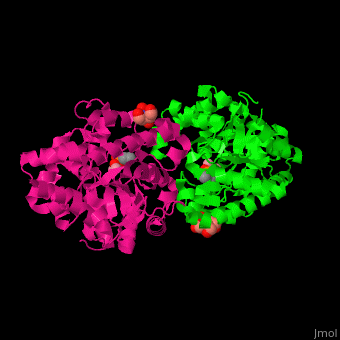Introduction
Phosphotriesterase (PTE) is an enzyme that plays a significant role in the detoxification and degradation of organophosphorus compounds, specifically phosphotriester pesticides and nerve agents. These compounds are highly toxic and can have detrimental effects on the environment and living organisms. Phosphotriesterase acts by catalyzing the hydrolysis of the phosphorus-oxygen bond in these compounds, converting them into non-toxic products.
Function
Phosphotriesterase or aryldialkylphosphatase or haloalkylphosphorus hydrolase or organophosphorus hydrolase or parathion hydrolase (PTE) catalyzes the conversion of aryl dialkyl phosphate to dialkyl phosphate and aryl alcohol[1].
For more details see SsoPox: a natural lactonase with promiscuous phosphotriesterase activities.
Relevance
PTE has no known natural substrate but has potential in detoxification of organophosphates poisons lethal effects. PTE can detoxify the insecticide paraoxon and the chemical warfare agent sarin[2].
Structural highlights
The structure of phosphotriesterase typically consists of a single polypeptide chain folded into a globular shape. It contains an active site that can accommodate and bind phosphotriester substrates. The active site usually consists of a metal ion, such as zinc, that assists in the catalytic process.
The catalytic mechanism of phosphotriesterase involves the nucleophilic attack of a water molecule on the phosphorus atom of the phosphotriester substrate. This attack results in the cleavage of the phosphorus-oxygen bond and the formation of a phosphorylated enzyme intermediate. Subsequently, a second water molecule hydrolyzes the phosphorylated enzyme intermediate, leading to the release of the hydrolyzed product and the regenerated enzyme.
The [3].Water molecules are shown as red spheres.
Phosphotriesterases have been extensively studied in order to increase their catalytic efficiency by directed evolution and structure based design[4][1][5][6][7][8][9].
3D structures of phosphotriesterase
Phosphotriesterase 3D structures

